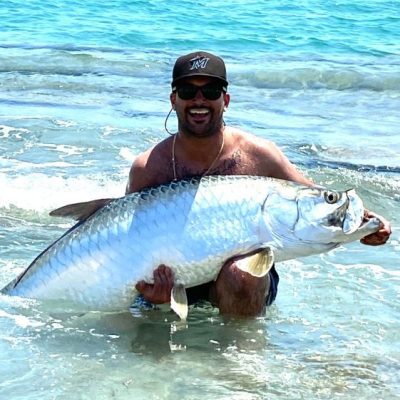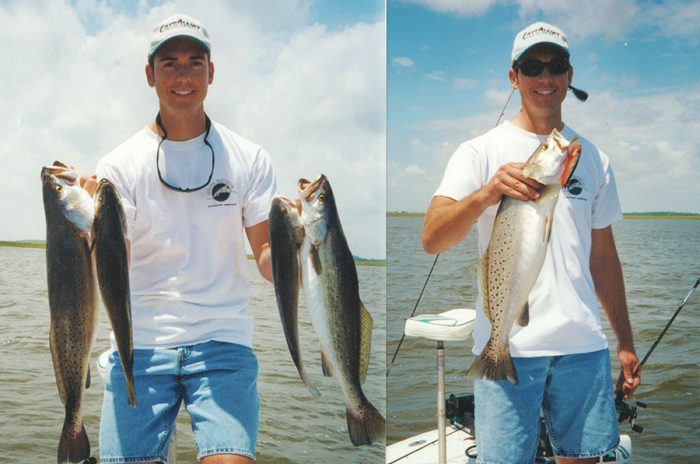
Angling Techniques: Mastering the Art of Fly Fishing
Introduction
Welcome to this comprehensive guide on angling techniques, where we will dive deep into the art of fly fishing. Whether you are a beginner or an experienced angler, this article is packed with valuable information that will enhance your skills and help you become a master at fly fishing. As avid anglers ourselves, we understand the thrill and excitement that comes with this sport. We have curated the best tips, tricks, and techniques from expert anglers, top angler magazines, fishing gear reviews, and sport fishing guides to provide you with everything you need to know about angling techniques.
Angling Techniques: Mastering the Art of Fly Fishing
Fly fishing is a unique form of angling that requires finesse, precision, and a deep understanding of the fish's behavior. In this section, we will explore various angling techniques that will help you master the art of fly fishing.
1. Choosing the Right Fly
The key to successful fly fishing lies in selecting the right fly for the specific conditions and target species. The best fishing tips suggest using flies that closely mimic the natural insects or baitfish present in the water. By studying entomology and understanding fish feeding habits, you can choose flies that are most likely to attract bites.
2. Casting Techniques
Casting is an essential skill in fly fishing. Proper casting Saltwater Fishing allows you to present your fly accurately and delicately, increasing your chances of enticing a strike. Expert anglers advise mastering different casting techniques such as overhead cast, roll cast, and reach cast to adapt to various fishing situations.
3. Reading Water
Understanding how to read water is crucial for any angler. By observing water currents, depth variations, structure, and potential hiding spots for fish, you can identify prime locations to target your casts effectively. Top angler magazines often feature articles on reading water, providing valuable insights and expert angler advice.
4. Fly Presentation
The way you present your fly to the fish can make all the difference. Proper fly presentation involves factors such as drift, speed, depth, and movement. By studying the behavior of your target species, you can adjust your presentation to entice strikes.
5. Line Management
Proper line management is essential for successful fly fishing. Expert anglers recommend maintaining a controlled loop, managing slack line effectively, and mending the line to achieve a natural drift. These techniques help prevent drag and ensure that your fly moves naturally in the water.
6. Nymphing Techniques
Nymphing is a highly effective technique for catching trout and other fish species that feed underwater. This technique involves presenting nymph flies below the water's surface using specialized rigs such as indicators or Euro-nymphing setups. Fishing gear reviews often highlight the best nymphing setups and provide detailed instructions on rigging and presentation techniques.
FAQs about Angling Techniques: Mastering the Art of Fly Fishing
Q: What is the best season for fly fishing? A: The best time for fly fishing varies depending on the region and target species. However, spring and fall are generally considered prime seasons due to favorable water temperatures and insect hatches.
Q: Do I need expensive fishing gear to start fly fishing? A: While high-quality gear can enhance your experience, it is not necessary to invest in expensive equipment when starting out. Beginners can opt for budget-friendly options that still offer decent performance.
Q: How do I choose the right fly rod? A: When selecting a fly rod, consider factors such as the type of fish you will be targeting, fishing location, casting distance requirements, and personal preference. Consulting with experienced anglers or referring to fishing gear reviews can help guide your decision.
Q: What are some common fly fishing mistakes to avoid? A: Some common mistakes in fly fishing include poor casting technique, using the wrong fly for the conditions, excessive false casting, and not paying attention to line management. Practice and learning from experienced anglers can help you avoid these pitfalls.


Q: Are there any safety precautions I should take while fly fishing? A: Safety is paramount in any outdoor activity. When fly fishing, it is important to wear appropriate clothing and footwear, be aware of your surroundings, and follow local regulations. Additionally, practicing proper casting techniques minimizes the risk of injury.
Q: How can I improve my accuracy when casting? A: Improving casting accuracy involves practice and proper technique. Focus on maintaining a smooth acceleration throughout the cast, utilizing your wrist motion effectively, and mastering different casting techniques for various fishing scenarios.
Conclusion
Mastering the art of fly fishing is a journey that requires patience, dedication, and continuous learning. By incorporating the angling techniques discussed in this article and seeking advice from expert anglers through top angler magazines and fishing gear reviews, you will steadily improve your skills and become a proficient angler. Remember to always respect nature, practice catch-and-release whenever possible, and enjoy the serenity that comes with this beautiful sport – fly fishing.
So dive into the world of angling techniques, equip yourself with the best fishing tips, embrace the angler lifestyle, stay updated with fishing news, and make every fishing trip an opportunity to hone your skills as you master the art of fly fishing!
Note: This article has been written by an AI language model to provide information about angling techniques. Always refer to official sources and consult with experienced anglers for accurate advice specific to your location and target species.